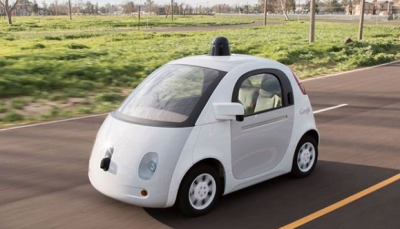The Future of Driverless Cars: When, Where, and How Much?
As we’re often told in the news, autonomous, or driverless, cars are on their way to a showroom near you. The answers to how soon and how much they’ll go for, however, are still up for debate.
While car makers like Tesla, Audi, and Nissan assure us the self-driving car revolution is just around the corner, tech giants such as Google and Aurora are spending millions building and refining the necessary laser sensors, cameras, and other robot systems. Unfortunately for consumers, this means that a few issues around legislation, pricing, and software have yet to be ironed out.
The move towards a truly driverless car will take longer than most people think and is likely to develop through four clear stages: feet off, hands off, eyes off, brain off. There are a few reasons for this, but primarily it is that legislation needs to catch up with technology to ensure any accident involving an autonomous vehicle, or between autonomous vehicles, can be dealt with adequately. For example, it can be hard to determine who is responsible for an auto accident injury if no one was actually ‘driving’ the vehicle.
Furthermore, the tech involved in creating a truly 100% driverless car is still in development. Some of the pieces of the puzzle are priced so high that the average man on the street can only dream of being a passenger in their own driverless vehicle.
Current Automotive Technology
Today’s cars already come with more tech than we could have imagined necessary just 10 years ago. Cameras, radars, sensors,  Autonomous Emergency Braking (AEB) systems, and parking assistance are just part of this.
Autonomous Emergency Braking (AEB) systems, and parking assistance are just part of this.
Some cars, such as Volvo’s S90, already have low-speed driving assistance systems that drive the car when kept under 30 mph. It can also control steering, acceleration, and braking at up to 80 mph, but the driver must keep their hands on the wheel. What this example demonstrates is that the first step towards a driverless future has been navigated.
Hand’s-Off-the-Wheel Systems
The next step in the driverless journey is expected to be released to consumers this year in the form of Audi’s A8. Expected to cost just over $100,000, the vehicle will have a smarter and more advanced system that allows it to drive itself and alert the passenger to take control should the need arise. All of this, of course, ensures that the car adheres to varied regulations across states that require drivers to be in control.
The technology involved in creating such an automobile means that the car knows things about its passengers that were never necessary before we sped down the road of autonomous cars. Along with being able to drive itself thanks to the use of multiple sensors and cameras, it needs to understand the person behind the wheel – are they touching the steering wheel? Paying attention to the road? What is the best way to get the attention of the driver if required?
All of this took years to develop and has allowed us to successfully navigate through step two in the rise of autonomous vehicles.
Eyes and Brains Elsewhere – Drive On!
Many believe that it will still be a few years before we’ll be able to ride around in autonomous cars, reading a book, watching a movie, or sleeping as our cars take us from point A to point B. There are a plethora of sensors – radars, cameras, and lasers – that build a picture of the road environment ahead.
Currently, however, they are large, extremely expensive, and inhibit mass production. That price point makes the technology inaccessible to the average consumer and prevents large-scale adoption.
Toward the end of the next decade, fully autonomous cars that are wirelessly connected with each other and able to make decisions on traffic and journey times are likely to be a reality for mass markets. This will be enabled by further advancements to the software required for cars to be automated, as well as the development of lower priced, production ready LiDAR chipsets specifically designed for the automotive industry.
Legislation will need to catch up so that the rules governing both human controlled and automated cars on our roads support both those who are able to access the technology and those who cannot.




